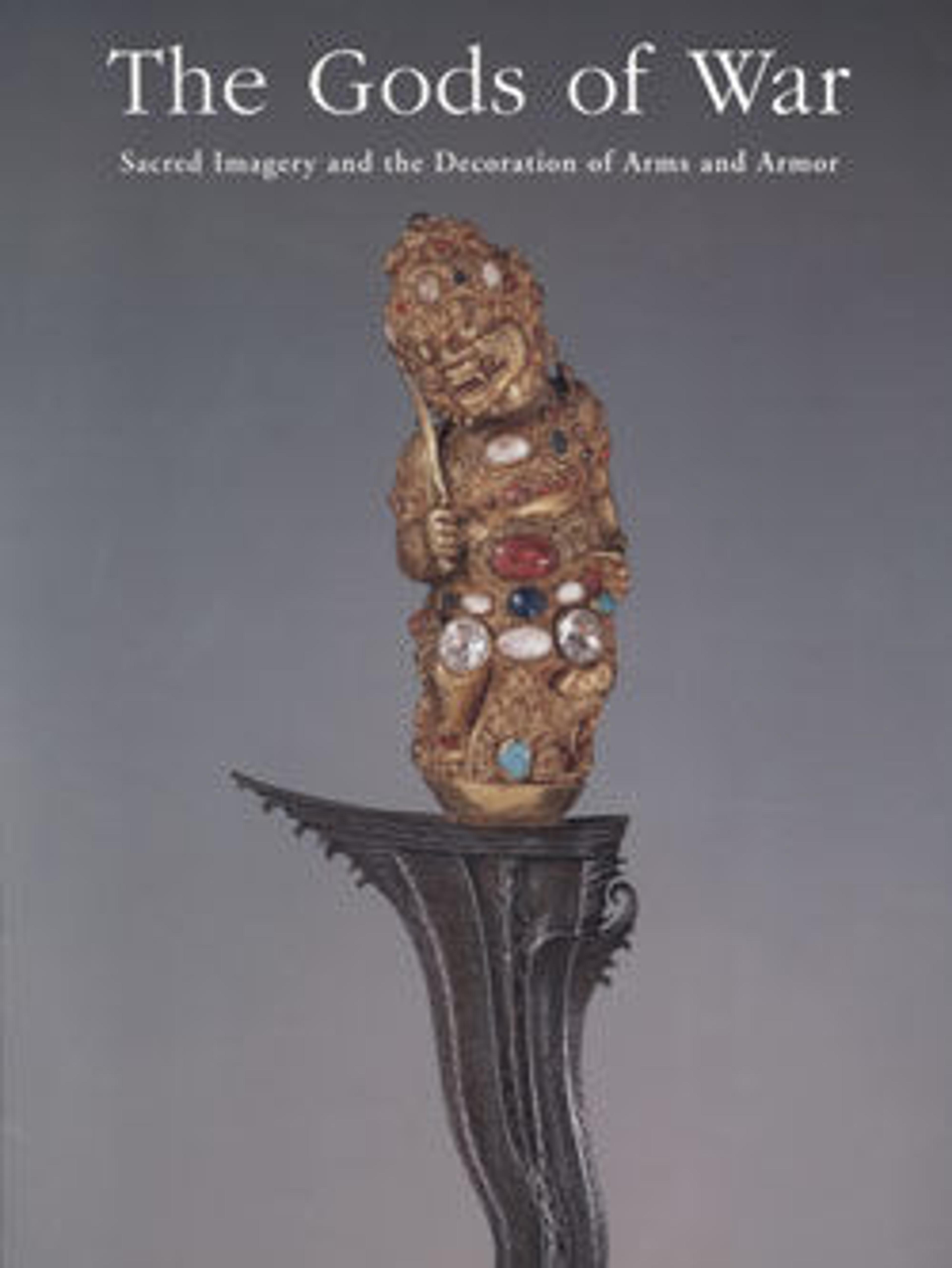Breastplate
The crucified Christ as Savior and Redeemer is boldly represented in the etched decoration of one half of this German breastplate. On the other half a soldier kneels in supplication before the cross, his hands clasped in prayer. From his hands there wafts a tasseled banderole bearing a plea to God for the preservation of his honor and an expression of the hope of eternal salvation: O GOT EREREI HOFNONG (Oh God, Honor[?], Hope), followed by the date 1580. Phrases of this type, known as Stossgebete, are found sporadically on German armor and weapons made throughout the fifteenth and sixteenth centuries. The figure bears the arms of an infantry officer––appropriately so since the breastplate is of the type and quality made for officers serving on foot or in the light cavalry.
The cross, through its association with the Crucifixion of Jesus, became the central image of Christian iconography, symbolizing the sacrifice of Christ, the promise of spiritual salvation, and the Christian Church itself. The term "Christ" is derived from the Greek and Latin for "anointed one," which is equivalent to the Hebrew term "Messiah." "Christ" became synonymous with Jesus through the establishment of belief in him as the divine king and savior anointed by God, whose coming was foretold in the Hebrew scriptures. Jesus as depicted on this breastplate shows many features typical of devotional crucifixion images venerating him as the Christ. Atop the cross is a small scroll inscribed INRI (an abbreviation for the Latin phrase "Iesus Nazarenus Rex Iudaeorum" (Jesus the Nazarene, King of the Jews), which, according to the Gospels, was placed there by order of Pontius Pilate, the Roman provincial governor who passed sentence on Jesus. Jesus wears the crown of plaited thorns, made by the soldiers to mock him before the Crucifixion. The Crown of Thorns symbolizes the Passion, the final cycle of events in the life of Christ, from his entry into Jerusalem until his death on the cross. The crowned head of Jesus is surrounded by a nimbus, radiant beams of light signifying divinity. At the foot of the cross appear a human skull and bones. In addition to standing as a general symbol of penitence and the transitory nature of life, the skull and bones represent the hill on which the Crucifixion took place, which was known as Golgotha, meaning "place of the skull." According to one apocryphal legend, the Crucifixion occurred on the spot where Adam's bones were buried, in affirmation of Christ's mission as the New Adam.
The cross, through its association with the Crucifixion of Jesus, became the central image of Christian iconography, symbolizing the sacrifice of Christ, the promise of spiritual salvation, and the Christian Church itself. The term "Christ" is derived from the Greek and Latin for "anointed one," which is equivalent to the Hebrew term "Messiah." "Christ" became synonymous with Jesus through the establishment of belief in him as the divine king and savior anointed by God, whose coming was foretold in the Hebrew scriptures. Jesus as depicted on this breastplate shows many features typical of devotional crucifixion images venerating him as the Christ. Atop the cross is a small scroll inscribed INRI (an abbreviation for the Latin phrase "Iesus Nazarenus Rex Iudaeorum" (Jesus the Nazarene, King of the Jews), which, according to the Gospels, was placed there by order of Pontius Pilate, the Roman provincial governor who passed sentence on Jesus. Jesus wears the crown of plaited thorns, made by the soldiers to mock him before the Crucifixion. The Crown of Thorns symbolizes the Passion, the final cycle of events in the life of Christ, from his entry into Jerusalem until his death on the cross. The crowned head of Jesus is surrounded by a nimbus, radiant beams of light signifying divinity. At the foot of the cross appear a human skull and bones. In addition to standing as a general symbol of penitence and the transitory nature of life, the skull and bones represent the hill on which the Crucifixion took place, which was known as Golgotha, meaning "place of the skull." According to one apocryphal legend, the Crucifixion occurred on the spot where Adam's bones were buried, in affirmation of Christ's mission as the New Adam.
Artwork Details
- Title:Breastplate
- Date:dated 1580
- Geography:Augsburg
- Culture:German, Augsburg
- Medium:Steel
- Dimensions:H. 16 5/8 in. (43.3 cm); W. 14 5/8 in. (37.1 cm); D. 7 1/2 in. (19 cm); Wt. 12 lb. 1 oz. (5470 g)
- Classification:Armor Parts-Breastplates
- Credit Line:Bashford Dean Memorial Collection, Funds from various donors, 1929
- Object Number:29.158.164
- Curatorial Department: Arms and Armor
More Artwork
Research Resources
The Met provides unparalleled resources for research and welcomes an international community of students and scholars. The Met's Open Access API is where creators and researchers can connect to the The Met collection. Open Access data and public domain images are available for unrestricted commercial and noncommercial use without permission or fee.
To request images under copyright and other restrictions, please use this Image Request form.
Feedback
We continue to research and examine historical and cultural context for objects in The Met collection. If you have comments or questions about this object record, please contact us using the form below. The Museum looks forward to receiving your comments.
